Accelerating Movement Science with Big Data
Scott L. Delp
Stanford University, USA
ABSTRACT Movement is essential for human health. Unfortunately, many conditions, including cerebral palsy, osteoarthritis, obesity, running injuries, and stroke, limit mobility at a great cost to public health and personal well-being. The proliferation of devices monitoring human activity, including mobile phones and an ever-growing array of wearable sensors, is generating unprecedented quantities of data describing human movement, behaviors, and health. Mobility data is also being collected daily by hundreds of clinical centers and research laboratories around the world. A focus of my laboratory is to overcome the data science challenges facing this mobility big data to improve human movement across the wide range of conditions that limit mobility. In this talk I will review results from analyzing movement data from 6 million individuals in over 100 countries around the world acquired using a smartphone app for activity and health tracking. This analysis has revealed new insights about physical activity levels and what factors are predictive of these activity levels.
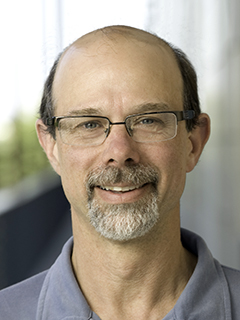 BIOSKETCH Scott Delp is the James H. Clark Professor, Founding Chairman of the Department of Bioengineering at Stanford, and Director of the National Center for Simulation in Rehabilitation Research. Delp transformed the field of biomechanics by creating highly accurate computer models of musculoskeletal structures and providing them to researchers worldwide using a software system (OpenSim) that he and his team developed. Delp invented fundamental technology for surgical navigation that is now in wide clinical use. Together with Mark Schnitzer and their students, Delp developed novel microendoscopes that allow realtime in vivo imaging of human muscle microstructure. Together with Karl Deisseroth and their students, Delp pioneered the use of optogenetics to control activity in the peripheral nervous system leading to important inventions for treating paralysis, spasticity and pain.
BIOSKETCH Scott Delp is the James H. Clark Professor, Founding Chairman of the Department of Bioengineering at Stanford, and Director of the National Center for Simulation in Rehabilitation Research. Delp transformed the field of biomechanics by creating highly accurate computer models of musculoskeletal structures and providing them to researchers worldwide using a software system (OpenSim) that he and his team developed. Delp invented fundamental technology for surgical navigation that is now in wide clinical use. Together with Mark Schnitzer and their students, Delp developed novel microendoscopes that allow realtime in vivo imaging of human muscle microstructure. Together with Karl Deisseroth and their students, Delp pioneered the use of optogenetics to control activity in the peripheral nervous system leading to important inventions for treating paralysis, spasticity and pain.
Delp currently serves as the Director of Mobilize Center of the NIH National Center of Excellence for Big Data in Mobile Health and the Director of the National Center for Simulation in Rehabilitation Research. Delp is a member of the National Academy of Engineering.
Computational Modeling of Proteins and Molecular Interactions
Lydia E. Kavraki
Rice University, USA
ABSTRACT The explosion of the “omics” data in biomedicine has fueled the proliferation of computational methodologies to interpret this data and to connect it with experimental as well as clinical research. This talk will focus on the work of my laboratory on understanding protein structure and function through the development of non-simulation approaches. Because proteins are involved in a wide range of physiological and pathological processes, they have been the subject of intense investigation to better understand health and disease. Our research targets problems where full space and time resolution are not needed to produce informative answers and where significant computational gains can be achieved using physics-based simulation approaches. In this talk, I will highlight conformational sampling methods for characterizing proteins at equilibrium and robotics-inspired algorithms for conformational exploration with experimental data obtained through hydrogen-exchange monitoring. I will also discuss our work on molecular docking of peptide ligands and its application to personalized immunotherapy.
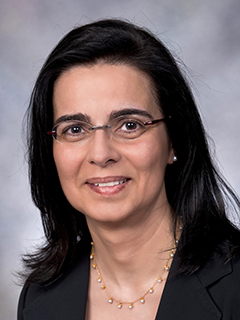 BIOSKETCH Lydia E. Kavraki is the Noah Harding Professor of Computer Science, professor of Bioengineering, professor of Electrical and Computer Engineering, and professor of Mechanical Engineering at Rice University. She received her B.A. in Computer Science from the University of Crete in Greece and her Ph.D. in Computer Science from Stanford University. Her research contributions are in physical algorithms and their applications in robotics (robot motion planning, hybrid systems, formal methods in robotics, assembly planning, micromanipulation, and flexible object manipulation), as well as in computational structural biology, translational bioinformatics, and biomedical informatics (modeling of proteins and biomolecular interactions, large-scale functional annotation of proteins, computer-assisted drug design, and the integration of biological and biomedical data for improving human health).
BIOSKETCH Lydia E. Kavraki is the Noah Harding Professor of Computer Science, professor of Bioengineering, professor of Electrical and Computer Engineering, and professor of Mechanical Engineering at Rice University. She received her B.A. in Computer Science from the University of Crete in Greece and her Ph.D. in Computer Science from Stanford University. Her research contributions are in physical algorithms and their applications in robotics (robot motion planning, hybrid systems, formal methods in robotics, assembly planning, micromanipulation, and flexible object manipulation), as well as in computational structural biology, translational bioinformatics, and biomedical informatics (modeling of proteins and biomolecular interactions, large-scale functional annotation of proteins, computer-assisted drug design, and the integration of biological and biomedical data for improving human health).
Kavraki has authored more than 200 peer-reviewed journal and conference publications and is one of the authors of the widely-used robotics textbook titled “Principles of Robot Motion” published by MIT Press. Work in her group during the last five years has produced the Open Motion Planning Library (OMPL), an open-source library of motion planning algorithms. The library is heavily used in industry and in academia both for robotics and bioinformatics applications. Kavraki currently serves as an associate editor of the International Journal of Robotics Research, the ACM/IEEE Transactions on Computational Biology and Bioinformatics, the Computer Science Review, Big Data, Frontiers in Molecular Biosciences, and the Annual Reviews for Robotics, Control, and Autonomous Systems. She is also a member of the editorial advisory board of the Springer Tracts in Advanced Robotics and the new IEEE Letters in Robotics and Automation. Kavraki served as the program chair (2014) and as the general chair (2015) of “Robotics: Science and Systems,” the premier robotics conference.
Kavraki received the Association for Computing Machinery (ACM) Grace Murray Hopper Award in 2000. She has also received an NSF CAREER award, a Sloan Fellowship, a Whitaker Investigator Award, the Early Academic Career Award from the IEEE Society on Robotics and Automation, a recognition as a top TR100 investigator from the MIT Technology Review Magazine, a recognition as a Brilliant 10 Scientist from the Popular Science Magazine, and the Charles Duncan Award for excellence in research and teaching from Rice University. Kavraki is a Fellow of ACM, a Fellow of IEEE, a Fellow of the American Association for the Advancement of Science (AAAS), a Fellow of the Association for the Advancement of Artificial Intelligence (AAAI), a Fellow of the American Institute for Medical and Biological Engineering (AIMBE), and a Fellow of the World Technology Network (WTN). She has recently been recognized with BioHouston’s Women in Science Award and the Anita Borg ABIE Technical Leadership Award. In 2017 Kavraki received the ACM Athena Lecturer Award. Kavraki is a member of the Academy of Medicine, Engineering and Science of Texas (TAMEST) and a member of the National Academy of Medicine (NAM).
Full Genome Analysis: Approach and Applications
Pui-Yan Kwok
Academia Sinica, Taiwan
ABSTRACT Next-generation sequencing (NGS) has revolutionized the diagnosis of genetic disorders but the causal mutations in many cases are not found readily. One reason for the low yield is that NGS does not produce a fully assembled genome so most structural variations are not detected. Furthermore, some unique sequences found in populations around the world are not part of the reference genome sequence against which the NGS data are compared.
We have developed a strategy to identify, in one set of experiments, all structural variations and single base variants in a patient’s genome in a trio study design to survey the genome comprehensively. Named “full genome analysis”, this approach combines long-read DNA sequencing with long single molecule mapping of the genome to produce phased (haplotype-resolved) genome assemblies where structural variations can be identified with breakpoints at single basepair resolution while all genes are covered evenly for single basepair variation detection. Early experience of this approach shows that a significant fraction of the negative NGS cases can be diagnosed by the “full genome analysis” strategy.
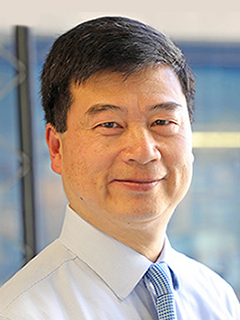 BIOSKETCH Pui-Yan Kwok is a Distinguished Research Fellow and Director of the Institute of Biomedical Sciences at Academia Sinica in Taiwan. Dr. Kwok is a Henry Bachrach Distinguished Professor at the University of California, San Francisco. Dr. Kwok’s research focuses on the development of new approaches to whole-genome analysis and their application to gene mapping and haplotyping.Dr. Kwok pioneered the high-throughput discovery of single nucleotide polymorphisms (SNPs) across the human genome and was a member of the International HapMap Consortium Steering Committee. The inventor of several fluorescence-based SNP genotyping methods, Dr. Kwok has recently been developing mapping and haplotyping methods based on microscopic analysis of single DNA molecules. Dr. Kwok received PhD and MD degrees from the University of Chicago and was a postdoctoral fellow at Washington University. Dr. Kwok has authored over 110 publications and holds three patents.
BIOSKETCH Pui-Yan Kwok is a Distinguished Research Fellow and Director of the Institute of Biomedical Sciences at Academia Sinica in Taiwan. Dr. Kwok is a Henry Bachrach Distinguished Professor at the University of California, San Francisco. Dr. Kwok’s research focuses on the development of new approaches to whole-genome analysis and their application to gene mapping and haplotyping.Dr. Kwok pioneered the high-throughput discovery of single nucleotide polymorphisms (SNPs) across the human genome and was a member of the International HapMap Consortium Steering Committee. The inventor of several fluorescence-based SNP genotyping methods, Dr. Kwok has recently been developing mapping and haplotyping methods based on microscopic analysis of single DNA molecules. Dr. Kwok received PhD and MD degrees from the University of Chicago and was a postdoctoral fellow at Washington University. Dr. Kwok has authored over 110 publications and holds three patents.
Dr. Pui-Yan Kwok is a dermatologist in San Francisco, California and is affiliated with multiple hospitals in the area, including UCSF Medical Center and Zuckerberg San Francisco General Hospital and Trauma Center. He received his medical degree from University of Chicago Pritzker School of Medicine and has been in practice for more than 20 years. Dr. Kwok accepts several types of health insurance. He is one of 94 doctors at UCSF Medical Center and one of 29 at Zuckerberg San Francisco General Hospital and Trauma Center who specialize in Dermatology. Dr. Kwok is a Fellow of the American Academy of Dermatology.
Construction of Gene Regulatory Networks
Wen-Hsiung Li
Academia Sinica, Taiwan
ABSTRACT A gene regulatory network (GRN) is a collection of regulatory interactions between transcription factors (TFs) and their target genes. Constructing the GRNs of an organism can increase our understanding of the organization and processes of gene regulation in the organism. To do this, however, one needs to have a large number of TF binding sites (TFBSs), which are required for predicting the target genes of TFs. The identification of TFBSs used to be a highly challenging task, but recent advances have made it much simpler. However, computational predictions of TFBSs are still much needed because even in Arabidopsis less than 50% of the TFs have known TFBSs. The second challenge is how to predict the target genes of a given TF. The third, most challenging part is how to identify the upstream regulators of a gene of interest. In my talk, I shall present a method for predicting the TFBS of a TF, a method for predicting the target genes of a TF and a method for predicting the upstream regulators of a gene. After these three steps, it is then rather simple to construct GRNs.
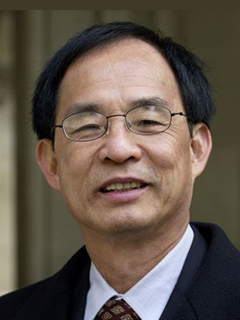 BIOSKETCH Wen-Hsiung Li’s research interests are in bioinformatics, computational biology, and molecular and genomic evolution. He is Director and Distinguished Research Fellow, Biodiversity Research Center, Academia Sinica, Taiwan and the James Watson Professor, Department of Ecology and Evolution, University of Chicago. He was elected to the National Academy of Sciences, USA in 2003 and received the Balzan Prize for Genetics and Evolution in 2003 and the Mendel Lecture and Medal in 2009. He serves as Editor, Molecular Phylogenetics and Evolution, Associate Editor, Genome Biology & Evolution, and Editorial Board, Genome Research and he served as Associate Editor, PloS Computational Biology 2005-2012. He was President, Society for Molecular Biology and Evolution, 2000.
BIOSKETCH Wen-Hsiung Li’s research interests are in bioinformatics, computational biology, and molecular and genomic evolution. He is Director and Distinguished Research Fellow, Biodiversity Research Center, Academia Sinica, Taiwan and the James Watson Professor, Department of Ecology and Evolution, University of Chicago. He was elected to the National Academy of Sciences, USA in 2003 and received the Balzan Prize for Genetics and Evolution in 2003 and the Mendel Lecture and Medal in 2009. He serves as Editor, Molecular Phylogenetics and Evolution, Associate Editor, Genome Biology & Evolution, and Editorial Board, Genome Research and he served as Associate Editor, PloS Computational Biology 2005-2012. He was President, Society for Molecular Biology and Evolution, 2000.
Biomaterials for Tissue Engineering and Regenerative Medicine
Antonios G. Mikos
Rice University, USA
ABSTRACT Advances in biology, materials science, chemical engineering, and other fields have allowed for the development of tissue engineering, an interdisciplinary convergence science. For the past two and a half decades, our laboratory has focused on the development and characterization of biomaterials-based strategies for the regeneration of human tissues with the goal of improving healthcare outcomes. In a collaborative effort with physicians, surgeons, and other scientists, we have produced new material compositions and three-dimensional scaffolds, and investigated combinations of biomaterials with cell populations and bioactive agents for their ability to induce tissue formation and regeneration. We have examined the effects of material characteristics, such as mechanical properties, topographical features, and functional groups, on cell behavior and tissue guidance, and leveraged biomaterials as drug delivery vehicles to release growth factors and other signals with spatial and temporal specificity. This presentation will review recent examples of biomaterials-based approaches for regenerative medicine applications and highlight future areas of growth, such as the use of tissue engineering for validation of cancer therapeutic discovery.
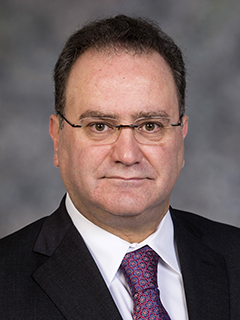 BIOSKETCH Antonios G. Mikos is the Louis Calder Professor of Bioengineering and Chemical and Biomolecular Engineering at Rice University. He is the Director of the National Institutes of Health Center for Engineering Complex Tissues, the Director of the Center for Excellence in Tissue Engineering, and the Director of the J.W. Cox Laboratory for Biomedical Engineering at Rice University. He received his Dipl.Eng. (1983) from the Aristotle University of Thessaloniki, Greece, and his Ph.D. (1988) in chemical engineering from Purdue University. He was a postdoctoral researcher at the Massachusetts Institute of Technology and the Harvard Medical School before joining the Rice Faculty in 1992 as an assistant professor.
BIOSKETCH Antonios G. Mikos is the Louis Calder Professor of Bioengineering and Chemical and Biomolecular Engineering at Rice University. He is the Director of the National Institutes of Health Center for Engineering Complex Tissues, the Director of the Center for Excellence in Tissue Engineering, and the Director of the J.W. Cox Laboratory for Biomedical Engineering at Rice University. He received his Dipl.Eng. (1983) from the Aristotle University of Thessaloniki, Greece, and his Ph.D. (1988) in chemical engineering from Purdue University. He was a postdoctoral researcher at the Massachusetts Institute of Technology and the Harvard Medical School before joining the Rice Faculty in 1992 as an assistant professor.
Mikos’ research focuses on the synthesis, processing, and evaluation of new biomaterials for use as scaffolds for tissue engineering, as carriers for controlled drug delivery, and as non-viral vectors for gene therapy. His work has led to the development of novel orthopaedic, dental, cardiovascular, neurologic, and ophthalmologic biomaterials. He is the author of over 550 publications and 29 patents. He is the editor of 15 books and the author of one textbook (Biomaterials: The Intersection of Biology and Materials Science, Pearson Prentice Hall, 2008). Mikos is among the top one percent most cited researchers in his field. He has been cited over 63,000 times and has an h-index of 131.
Mikos is a Member of the National Academy of Engineering, a Member of the National Academy of Medicine, a Member of the International Academy of Medical and Biological Engineering, a Member of the Academy of Medicine, Engineering and Science of Texas, and a Member of the Academy of Athens. He is a Founding Fellow of the Tissue Engineering and Regenerative Medicine International Society, a Fellow of the American Association for the Advancement of Science, a Fellow of the American Institute of Chemical Engineers, a Fellow of the American Institute for Medical and Biological Engineering, a Fellow of the Biomedical Engineering Society, a Fellow of the Controlled Release Society, a Fellow of the International Union of Societies for Biomaterials Science and Engineering, and a Fellow of the National Academy of Inventors.
Mikos has been recognized by various awards including the Lifetime Achievement Award of the Tissue Engineering and Regenerative Medicine International Society-Americas, the Founders Award and the Clemson Award for Contributions to the Literature of the Society For Biomaterials, the Robert A. Pritzker Distinguished Lecturer Award and the Shu Chien Achievement Award of the Biomedical Engineering Society, the Excellence in Surface Science Award of the Surfaces in Biomaterials Foundation, the Alpha Chi Sigma Award for Chemical Engineering Research and the James E. Bailey Award in Biological Engineering of the American Institute of Chemical Engineers, the Meriam/Wiley Distinguished Author Award of the American Society for Engineering Education, the Edith and Peter O’Donnell Award in Engineering of the Academy of Medicine, Engineering and Science of Texas, the Marshall R. Urist Award for Excellence in Tissue Regeneration Research of the Orthopaedic Research Society, the Distinguished Scientist Award – Isaac Schour Memorial Award of the International Association for Dental Research, and the Distinguished Engineering Alumnus Award of Purdue University.
Mikos has mentored 63 graduate students on their way to completing their doctoral studies, as well as 39 postdoctoral fellows, 22 of whom remain in academia at institutions including Chung-Ang University, Georgia Tech, Hanyang University, Mayo Clinic, Tulane University, University of Maryland, University of New Mexico, University of Oklahoma, University of Texas at Austin, and Virginia Tech among others. He has given over 720 presentations in national and international meetings and over 190 invited seminars at universities and companies. He is organizer of the continuing education course Advances in Tissue Engineering offered annually at Rice University since 1993.
Mikos is a founding editor and editor-in-chief of the journals Tissue Engineering Part A, Tissue Engineering Part B: Reviews, and Tissue Engineering Part C: Methods and a member of the editorial boards of the journals Advanced Drug Delivery Reviews, Cell Transplantation, Journal of Biomaterials Science Polymer Edition, Journal of Biomedical Materials Research (Part A and B), and Journal of Controlled Release. He is Past-President of the Tissue Engineering and Regenerative Medicine International Society-Americas and the Society For Biomaterials.
Cancer Precision Medicine; where we are and should go?
Yusuke Nakamura
University of Chicago, USA
ABSTRACT With the rapid advances in basic and clinical cancer research, we have accumulated a large body of information of cancer and new sequencing technologies now allow us to implement a “Cancer Precision Medicine (CPM)” system in the clinic. The CPM system includes a wide range of cancer managements such as cancer detection/screening, selection of a drug to a right patient, and providing new types of personalized immunotherapy. For cancer detection/screening, liquid biopsy will play key roles. Liquid biopsy using cell-free DNA/RNA isolated from blood plasma can be applied for cancer screening, identification of actionable mutations, monitoring cancer relapse/recurrence, detecting minimum residual diseases, and evaluating drug responses. In this system, individual cancer patients expect to receive a personalized care with a concept of “a right dose of a right drug at a right time”. Particularly, cancer screening and relapse monitoring with liquid biopsy are clinically useful for very early detection of detection of cancer relapse before identification by imaging methods. Exome sequencing information is also essential for the CPM system for neoantigen vaccine treatment as well as personalized TCR-engineered T cell therapy. However, due to the very complex nature of the information and individual differences in germline and somatic genetic variations, we need to implement the artificial intelligence (AI) in the hospital systems. I discuss a possible workflow of cancer precision medicine for cancer patients by reviewing recent booming technologies and treatments that have been used or will be potentially used in the systematic CPM system.
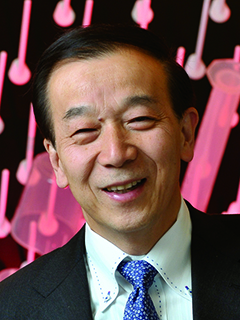 BIOSKETCH Dr. Yusuke Nakamura received his MD in 1977 and his PhD in 1984 from Osaka University. While working as a surgeon, he witnessed a 27 year old patient die of cancer, which affected him deeply. In 1989, he became Head of the Biochemistry Department, at the Cancer Institute, Japanese Foundation for Cancer Research. He was appointed as a professor at the Institute of Medical Science, University of Tokyo in 1994 and the Department of Medicine at the University of Chicago in 2012. From January to December 2011, Nakamura was Special Advisor to the Cabinet Secretary General, Office of Medical Innovation, Cabinet Secretariat, Government of Japan. Nakamura received the Keio Medical Science Prize in 2000 and the Tomizo Yoshida Award of the Japanese Cancer Association in 2002, and was elected as a member of the Association of American Physicians in 2011.
BIOSKETCH Dr. Yusuke Nakamura received his MD in 1977 and his PhD in 1984 from Osaka University. While working as a surgeon, he witnessed a 27 year old patient die of cancer, which affected him deeply. In 1989, he became Head of the Biochemistry Department, at the Cancer Institute, Japanese Foundation for Cancer Research. He was appointed as a professor at the Institute of Medical Science, University of Tokyo in 1994 and the Department of Medicine at the University of Chicago in 2012. From January to December 2011, Nakamura was Special Advisor to the Cabinet Secretary General, Office of Medical Innovation, Cabinet Secretariat, Government of Japan. Nakamura received the Keio Medical Science Prize in 2000 and the Tomizo Yoshida Award of the Japanese Cancer Association in 2002, and was elected as a member of the Association of American Physicians in 2011.
Nakamura is a geneticist best known for identifying the tumor suppressor gene APC responsible for Familial Adenomatous Polyposis. In addition, he has been leading the research field of personalized medicine, and contributing to genomic medicine and also cancer research fields for more than two decades. Nakamura identified Variable Number of Tandem Repeat (VNTR) markers in 1987 and APC in 1991. He is one of the world’s pioneers in applying genetic variations (VNTR and SNP markers) and whole genome sequencing and analysis in medical science in the world. His outstanding contribution to medical science in the past can be measured by his publication of nearly 1,200 articles. His recent work focuses on the molecular characterization of druggable molecular targets including some kinases and methyltransferases that are specifically expressed in cancer cells. Using cancer-specific molecules, he has developed therapeutic cancer vaccines and antibody to treat cancer, and is also developing molecular targeting drugs. Nakamura now works in his lab at the Pritzker School of Medicine in Chicago, which researches Oncoimmunogenomics, the genetic characterization of the immune system.

